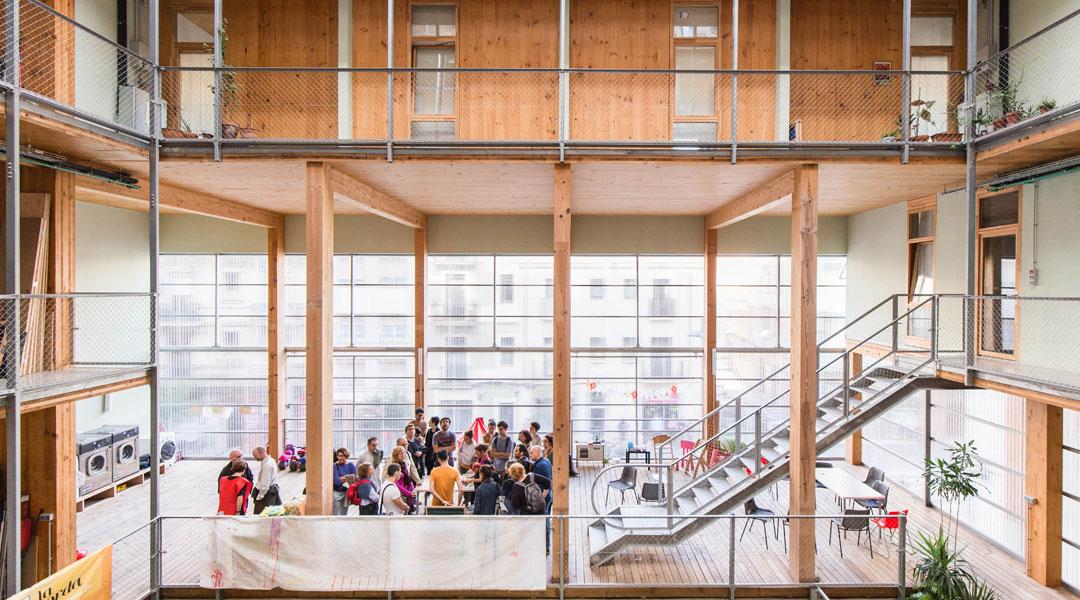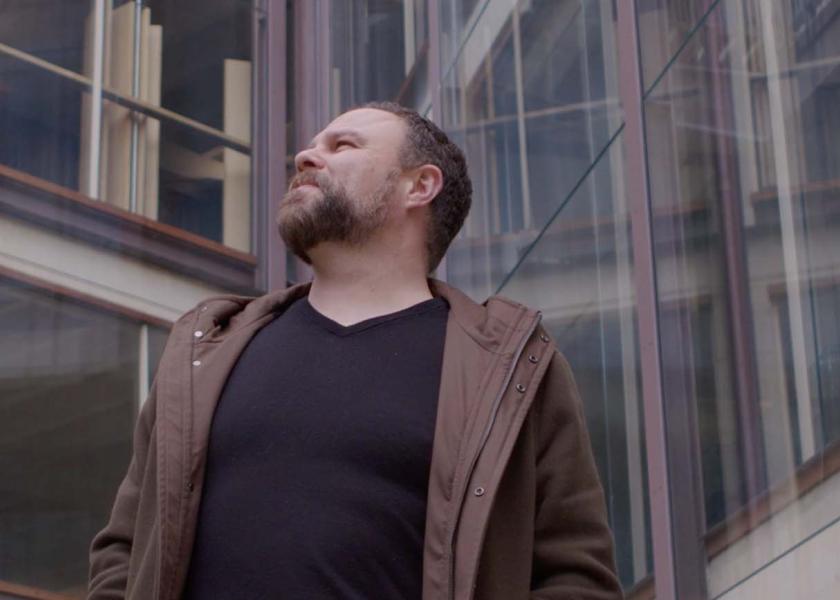Spanish architects
Building the present and the future

In recent decades, many architects have made Spain famous around the world. This is a selection of professionals from different generations and profiles, from the famous Rafael Moneo to innovative architect collectives, who bet on a new way of working where individual authorship is no longer relevant.
The talent of Spanish architects is captured in extremely diverse proposals: from impressive high-rises that transform the city skyline to the restoration of historical buildings that breathe new life into neighbourhoods, including cooperative buildings that encourage communal living or luxury mansions. The work of these big names transcends our borders: Rafael Moneo, for example, is behind the iconic Puig Tower in Barcelona, but also the Cathedral of Our Lady of the Angels in Los Angeles, United States. Even if a city were built on Mars, it would bear the stamp of a Spanish architect—keep reading to learn why—. To mark the Open House Madrid festival (25–28 September), sponsored by Iberia, which gives you the chance to visit buildings and architecture studios that are normally closed to the public, we present some of today's most important Spanish architects.
Rafael Moneo
The Nobel of architecture
Born in Navarra in 1937, Rafael Moneo is one of the most outstanding architects in the world. Solid proof of his prestige are the awards he has received, like the Prince of Asturias Award for the Arts, the Pritzker Architecture Prize—considered the “Nobel Prize” for architecture—or the Golden Lion at the Venice Biennale of Architecture. His firm is behind several iconic buildings in Spain, like the Kursaal in San Sebastián, the National Museum of Roman Art in Mérida, the Fundació Pilar i Joan Miró in Palma de Mallorca and the Puig Tower in Barcelona. In Madrid, he is the author of significant extensions at Atocha railway station and the Museo del Prado, as well as the Palace of Villahermosa’s transformation into the Thyssen-Bornemisza Museum. His career abroad has also been impressive, examples of this are the Moderna Museet in Stockholm and the Cathedral of Our Lady of the Angels in Los Angeles.
Alberto Campo Baeza
The architect of light
The imposing buildings by Alberto Campo Baeza (Valladolid, 1946) amaze us thanks to the masterful use of light and sombreness, which is evident in his latest project: the Lycée Français library in Madrid. A member of the Royal Academy of Fine Arts of San Fernando, he has received prestigious awards like the Premio de Arquitectura Española Internacional [International Spanish Architecture Award], the Medalla de Oro de la Arquitectura [Golden Medal for Architecture] or the National Architecture Award of Spain. Andalucía’s Museum of Memory—one of the 10 Modern Wonders of the World according to National Geographic magazine—, located in Granada, the Between Cathedrals square in Cádiz, and the Benetton daycare centre in Venice are some of his most famous works, although we cannot forget his fantastic collection of private houses, from the House of the Infinite, in Cádiz, or the Moliner House, in Zaragoza, to Olnick Spanu, in New York.
Carmen Pinós
The impact of geometry
Carmen Pinós (Barcelona, 1954) is a role model of contemporary Spanish architecture. Among others, she has received the French Prize for Women Architects and the National Architecture Award of Spain. The Igualada cemetery, in Barcelona, for example, is from her first period alongside Enric Miralles (1955-2000)—one of the most notorious architects of the 20th century—. With her own studio, she carries out dozens of impactful projects, like the Cube skyscrapers in Guadalajara, Mexico, CaixaForum in Zaragoza, or Escola Massana in Barcelona, which feature simple geometric and organic shapes.
Andrés Cánovas
The architecture of care
For Andrés Cánovas (Cartagena, 1958) architecture must tend to the land, the climate and the people: this is what the “architecture of care” consists of. Known for his educational and research work and his commitment to sustainability, with his associates Atxu Amann and Nicolás Maruri, he took part in the comprehensive recovery and conservation project of the Molinete Roman Forum in Cartagena (Murcia), which received the Premio Nacional de Restauración y Conservación de Bienes Culturales [National Award for the Conservation and Restoration of Cultural Property] in 2012. As well as works related to cultural buildings, like the Panoramic Lift, also in Cartagena, social housing, like in the neighbourhood of Carabanchel in Madrid, also features prominently throughout his career.
Emilio Tuñón
Theory and practice
Emilio Tuñón (Madrid, 1959) and Luis Moreno García-Mansilla (1959-2012)—considered one of the most brilliant contemporary architects—were the authors of a long line of projects, featuring museums like the Museum of Archaeology and Fine Arts in Zamora, the MUSAC in Castilla y León or the Royal Collections Gallery in Madrid. After Moreno’s death, Emilio Tuñón continues his prolific career with his new architectural firm dedicated to “the encounter of the practice of design and construction with theory and teaching.” He has been recognized with the Mies van der Rohe Award—the most important contemporary architecture award in the European Union—, the Gold Medal of Merit in the Fine Arts and the National Architecture Award of Spain.
Izaskun Chinchilla
Sustainability and inclusion
Izaskun Chinchilla is one of the leading figures in sustainable architecture. In fact, her studio is proud of being a pioneer in incorporating the circular economy into architecture. Born in Madrid in 1975, she takes part in projects including fleeting urban architecture, interior design and the restoration of historical buildings, like the Castillo de Garcimuñoz in Cuenca, transformed into a cultural media centre. Chinchilla is known for her multidisciplinary approach including a gender perspective.
María Langarita y Víctor Navarro
Established youth
María Langarita and Víctor Navarro, born in 1979, belong to an established generation of young architects. Their projects include the transformation of Matadero Madrid Nave 15 into the headquarters of the Red Bull Music Academy—with a Special Mention in the Emergent Architect European Union Prize for Contemporary Architecture, Mies van der Rohe Award—and the conservation of the Serrería Belga building, also in Madrid, and its transformation into a cultural space—where the 2025 edition of Espacio Iberia was held—. Recently, the studio has won the public tender to build a block of buildings as part of the Manzana Verde project in Málaga, which will turn an industrial estate into an eco-district.
Alfredo Muñoz
Architecture for Mars
This architect from Burgos, born in 1979, not only transcends national borders but also planetary frontiers. His ABIBOO studio has taken part in the design of a city on Mars (Nüwa) for a million people which would begin construction in 2050. Muñoz thinks of ABIBOO as an innovation platform associated with self-sufficiency, sustainability and technology. His proposals are diverse: from prefabricated bunkers or portable emergency shelters to large-scale housing solutions or luxury homes. He has even developed a patent to build hotels in less than four days.
Lacol
Collective strength
A new formula for building architecture, in which individual authorship is diluted in favour of the collective and which integrates approaches from other disciplines, seems to attract new generations of architects. An interesting example of this trend is Lacol. This is not a traditional architectural firm, with one or two big names, but rather an architect collective that functions like a cooperative and prioritizes its social and environmental commitment. In 2022, they won the coveted Mies van der Rohe Award in the Emerging Architecture category for La Borda, a collective housing complex in the neighbourhood of La Bordeta in Barcelona, where they bet on sustainability, affordability and users’ participation in decision-making.
A more complete but non-exhaustive list of the most renowned architects in recent decades should undoubtedly include figures like Carlos Ferrater (Barcelona, 1944), Santiago Calatrava (Valencia, 1951), Fernando Menis (Santa Cruz de Tenerife, 1951), Iñaki Ábalos (San Sebastián, 1956), Fuensanta Nieto and Enrique Sobejano (Madrid, 1957), Carlos Lamela (Madrid, 1957), Rafael de la Hoz Castanys (Córdoba, 1959) and Alejandro Zaera-Polo (Madrid, 1963). Because Spanish architecture not only boasts good health, it is overflowing with talent.







